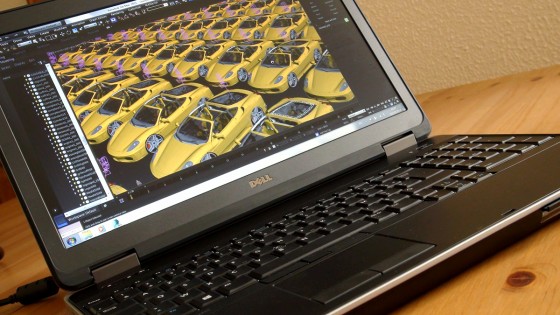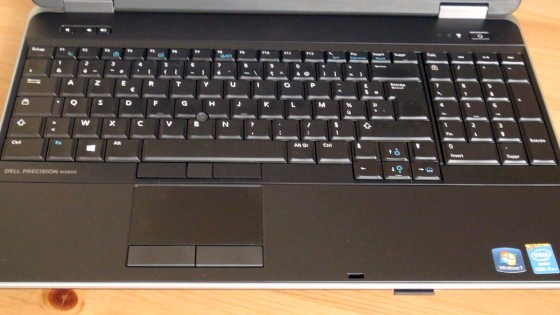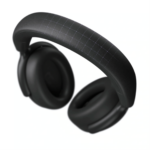Dell now has three 15-inch mobile workstations. Tom Lansford takes a close look at the newest in the line, the Precision M2800.
Today, Dell offers three models of 15-inch mobile workstations. At first glance, more than one 15-inch mobile workstation seems like two too many. In this review I’ll take a look at the newest addition to this crowded product line to see why the Precision M2800 might be the right 15-inch mobile workstation for you.
The three models in the Dell Precision line-up are:
- Dell Precision M4800
- Dell Precision M3800
- Dell Precision M2800

The Precision M4800 was announced together with its 17-inch big brother, the Precision M6800 in 2013. That was followed late in the year with the announcement of the Precision M3800. Earlier this year, the Austin workstation experts announced 15-inch-mobile-workstation #3, the Dell Precision M2800.
Let’s dissect the Dell line-up before I look at the latest model.
Divide and conquer the market
In this case, three 15-inch mobile workstations from one vendor is not a simple overlap of product life-cycles. All three systems will stay in the market until the end of 2015. I talked with Dell about their workstation ambitions and they are determined not only to grow their market share but to expand the mobile workstation market as well. To achieve their goals, the company is parsing the mobile workstation market into thinner slices.
The Precision M4800 is the evolutionary product. The look and feel, as well as the specifications, made it the 2013 “next-gen” version of the previous generation. It is the solid, configurable, and expandable 15-inch companion to the Precision M6800. It can be loaded with 32 GB of memory, Intel Extreme Edition CPU power, Nvidia or AMD graphics performance, and up to three storage devices. If you want a 15-inch road-warrior, this is it.
The Precision M3800 is the revolution. Much thinner, much lighter and with a MacBook styling, it is a design never seen before from Dell. The performance is good and the Precision M3800 brought the QHD high-resolution touch-display to Dell’s line-up. The slim design weighing only 4.4 pounds (2 kg) enforces practical limits on expandability and performance. However the performance is solid and the light weight makes it a good choice for designers on the road. And at meetings, the stylish design will have colleagues asking if that is really a workstation.
And the Precision M2800? With this third model, Dell is delivering a professional, certified mobile workstation that drops the starting price to levels never seen before. The starting price of $1079, the Precision M2800 undercuts the competition by more than $300. Dell hopes this expands the market and not only Dell’s market share.
Dig into the details
I have the Precision M2800 and the Precision M3800 in the office so I can compare and contrast these two very different models as I look at the features of the Precision M2800. First impression? This is a traditional, mobile workstation. It’s solid, has good performance, and is certified with ISV applications.
The first feature is the price. The Dell Precision M2800 configurations start at just over $1000 and go up to $1700 which is where the Precision M3800 prices begin. The Precision M2800 starting price is $300 lower than 15 inch models from Lenovo and HP.

The form-factor is 100% traditional; typical styling and weight. The Precision M2800 is a bit thick because it has everything integrated. Coming in at 5.64 lbs. (2.4 kg), the weight is typical for this class of workstation. It is 1 ½ lbs. heavier than the Precision M3800. The system is populated with an optical drive, SD card reader, USB, VGA connector, and Ethernet connection. The system has active cooling and an exhaust vent on the left side to keep your coffee warm. The Precision M3800 is not only lighter, it is significantly thinner.
Unlatching the display release reveals the HD display. Resolutions of 1920 x 1080 such as my system has, have been standard fare on mobile workstations for many years. The least expensive Precision M2800 offers a display resolution of 1366 x 768 pixels. Do not save your money on the display. It is too small; modern CAD and design software interfaces need a higher resolution than this to display menus and dialogs fully. In contrast, the Precision M3800 display options include a 1920 x 1080 resolution and an incredible 3200 x 1800 pixel resolution with five-finger multi-touch capability.
The full-size keyboard with dedicated number pad on the right stretches across the entire width of the Precision M2800. The standard-size touchpad has two integrated buttons. The Precision M3800 omits the dedicated number-pad and has very flat keys with a soft touch. The touch-pad is button-free, larger, and easier to use than the Precision M2800’s touch-pad.

Memory options are 4, 8, and 16 GB. Storage is configurable from 500 GB to 1 TB. Dell also offers options for a 500 GB hybrid drive or a 128 GB SSD storage device. As with the 1366 x 768 pixel display, 4 GB of memory is really pushing the lower limits of workstation hardware requirements. This configuration can be acceptable for occasional use and with smaller designs; however, I feel that most professionals will need more memory. The Precision M3800 offers a 500 GB hard drive or a 500 GB hybrid drive as well as 256 GB and 512 GB SSD storage. It also offers either 8 GB or 16 GB of memory.
For design, CAD, and computing, the Precision M2800 offers Intel i5 and i7 CPUs in dual-core models up to the i7-4610M running at 3.0 GHz and quad-core i7-4810MQ running at 2.8 GHz. If you use interactive CAD and 3D design software, you should opt for a higher speed dual-core CPU. If you use rendering or simulation software, you should select the quad-core model. For relatively simple 2D or 3D drafting or sketching applications, a slightly lower speed CPU is sufficient, and for more demanding interactive 3D work, the fastest CPU is a good choice. It keeps the graphics pipeline full. Speaking of graphics, the AMD FirePro W4170M is a professional GPU with 2 GB of graphics memory. It is quite capable of handling applications destined for the Precision M2800.
The Precision M3800 stylish design imposes restrictions on the technology in the system. The maximum CPU speeds are lower. There are only two processors choices. Both the CPUs are quad-core. One is the i7-4702HQ at 2.2 GHz and the other is the i7-4712HQ at 2.3 GHz. The graphics chip is an Nvidia Quadro K1100M. Like the AMD FirePro W4710M, it sports 2 GB of graphics memory.
A look at performance
Professional workstations are designed for high levels of reliability and go through a testing and certification process for important professional applications. This makes the systems more reliable and stable than a regular notebook. Equally important to reliability is performance. For this review, I look at raw graphics performance and interactive 3D performance using SPECviewperf 12 and Autodesk 3DS Max 2015.
The Precision M2800 with its AMD FirePro graphics has good 3D performance. It easily beat its big brother in SPECviewperf 12. It is hard to definitively nail down the reason behind the results because they have different GPUs and the Precision M2800 I tested has a 2.8 GHz CPU whereas the Precision M3800 uses a 2.2 GHz processor. Given the differences, the Precision M3800 results are in line with my expectations. However, I must point out that the Precision M3800 tests were run on Windows 8.1 which is not officially supported by SPECviewperf 12.
SPECviewperf 12.0
| Viewset | Composite: Dell Precision M2800 | Composite: Dell Precision M3800 | |
| catia-04 | 19.29 | 15.18 | |
| creo-01 | 18.62 | 15.34 | |
| energy-01 | 0.35 | 0.32 | |
| maya-04 | 22.44 | 14.01 | |
| medical-01 | 5.84 | 4.96 | |
| showcase-01 | 12.77 | 8.14 | |
| snx-02 | 23.55 | 15.65 | |
| sw-03 | 37.45 | 25.69 | |
Two takeaways from these results. The faster CPU makes a difference. SPECviewperf loads a single CPU core and does not use multiple cores. This is the same effect when using interactive 3D design and CAD software. The test results support my recommendation above which is to take the fastest dual-core configuration if interactive 3D modeling is the primary task for this mobile workstation.
Application testing is done with 3DS Max 2015. I use a detailed model of a Ferrari. There are different sizes of models: a Max file with one car, ten cars, and one hundred cars. The goal is to find the differences in interactive 3D performance between the small, medium and large models and also between the Precision M2800 and the Precision M3800. Quite literally, I look for performance differences that you can see and feel because this is what affects productivity at work.
3DS Max uses a feature to degrade the quality of the drawn image in order to maintain a constant frame-rate performance. I turn off the feature in my tests which forces the full display of the model while I interact with it.
The Precision M2800 has no problem with a single Ferrari. And it has no discernible difference in performance with the 10-car model. Only with 100 Ferraris can I feel a slow-down in 3D performance. Still, the system remains very responsive. You can work on medium to large designs with this system.
The Precision M3800 gives the same flawless performance for both the single Ferrari and the 10 car model. With an array of 100 cars, the Precision M3800 finally slowed down – but just a bit. Testing the two workstations side by side showed that when interacting with the 100 car model, the Precision M2800 was just a touch more responsive than the Precision M3800.
As with SPECviewperf 12, this difference is likely due to the slower clock speeds of the CPU in the Precision M3800. Although SPECviewperf 12 does a good job of loading the graphics system, previous tests I have done show that the CPU performance remains a factor. With previous 3DS Max testing, I found that 3DS Max is more restricted by CPU performance than GPU performance. Said another way, as the Max model complexity increases, the CPU becomes the bottleneck in the system before the GPU.
When is the Precision M2800 the right mobile workstation?
With three 15-inch mobile workstations, Dell is splitting the market into finer slices to better serve customers:
- The Precision M4800 for a full-blown desktop replacement in a 15-inch format
- The Precision M3800 to expand the workstation market with a stylish, thin, light workstation with an incredible QHD multi-touch display
- The Precision M2800 with the lowest starting price for a certified professional workstation.
This strategy could work for Dell and no one else is going down the same path.
But, and this is a huge ‘but’: the low, low starting price for the Precision M2800 is a configuration that only a purchasing manager can love. For professional design it is useless. Start with the 1366 x 768 pixel resolution on a 15-inch display. That is a show-stopper. Also, no engineer in their right mind is going to choose a mobile workstation with only 4 GB of memory. This makes Dell’s $1079 “starting at” price a complete non-starter for a professional workstation.
Fortunately, the Precision M2800 offers a nice selection of configuration options. With the AMD FirePro graphics standard, an HD display, 16 GB of memory, and a high-performance dual or quad-core CPU, this is a nice, affordable road-runner. For this reason, Dell could have a winning system and grow their professional workstation market.
In the end, the Dell Precision M2800 may not get you the envious looks that the Precision M3800 will, but it is sure to get the job done at a good price. And what matters more to you?
 CADplace provides information on the CAD and professional design market in German, French and English. Tom Lansford has been working in the professional graphics market for more than 25 years.
CADplace provides information on the CAD and professional design market in German, French and English. Tom Lansford has been working in the professional graphics market for more than 25 years.
##





